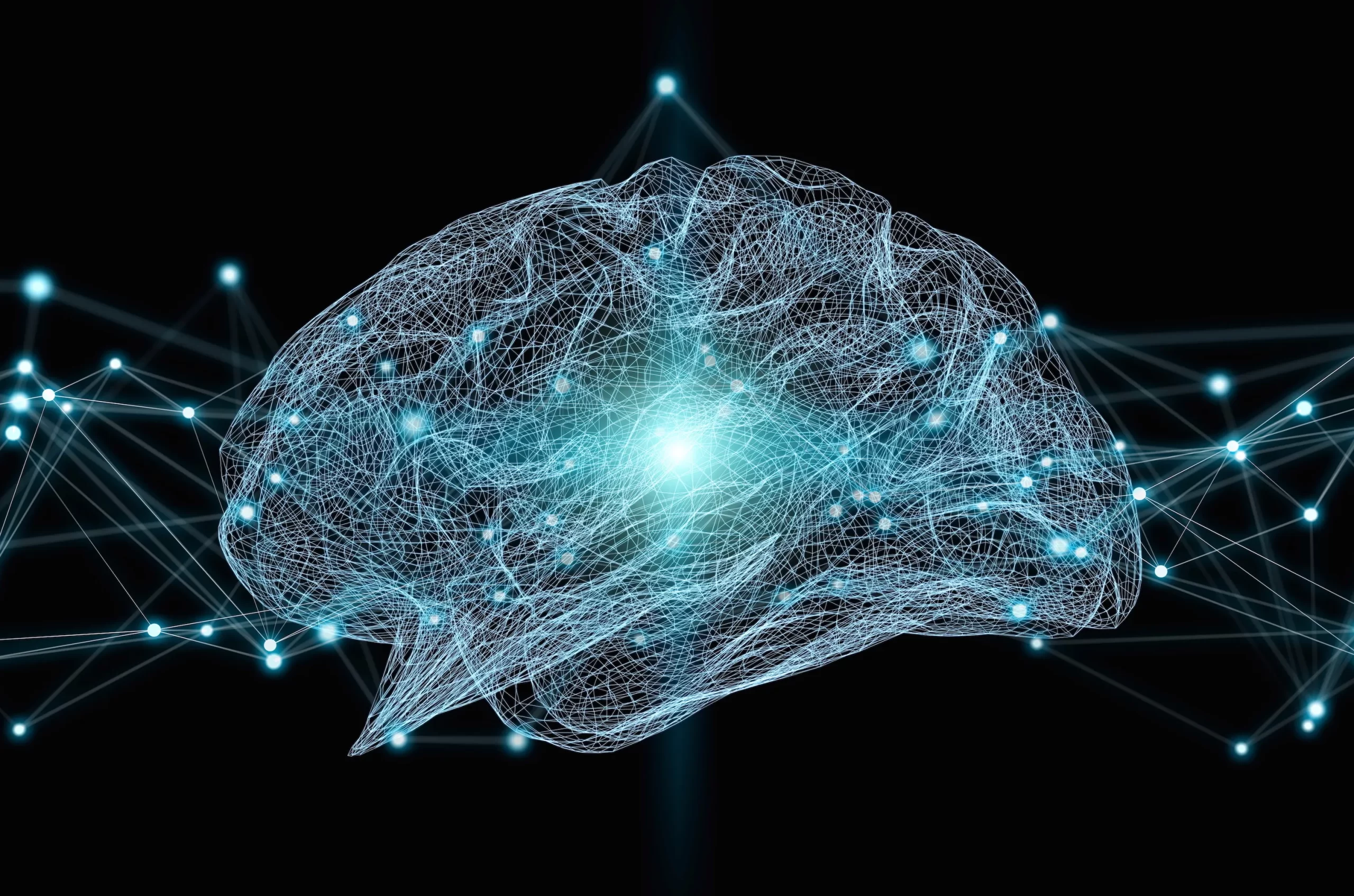Introduction:
In the ever-evolving landscape of technology, Western Sydney University in Australia is making groundbreaking strides in the field of neuroscience and artificial intelligence (AI) with the development of DeepSouth. Additionally, this supercomputer, set to go online next year, is poised to become the world’s first capable of simulating networks at a scale comparable to the human brain.

With an impressive processing capability of 228 trillion synaptic operations per second, DeepSouth is on the verge of rivaling the computational prowess of the human brain, which is known for its remarkable energy efficiency, consuming a mere 20 watts of power.
Join TechoVedas Community here
Understanding the Brain’s Efficiency:
The human brain’s extraordinary ability to process the equivalent of an exaflop, or a billion-billion mathematical operations per second, using minimal energy has long intrigued researchers. Additionally, DeepSouth aims to unravel this mystery by simulating brain-like networks on an unprecedented scale.
The hope is that by understanding how the brain achieves such efficiency, researchers can not only revolutionize our understanding of neuroscience but also pave the way for the creation of a cyborg brain that surpasses the capabilities of our own.
Read More: Is Apple Preparing for Foldable Phones? – techovedas
Evolution of supercomputing
The landscape of supercomputing has witnessed a remarkable evolution over the years, culminating in Western Sydney University’s groundbreaking project – DeepSouth. Set to go online next year, this supercomputer represents not just a technological advancement but the latest chapter in a storied history that stretches back through the annals of computing. With an extraordinary processing capability of 228 trillion synaptic operations per second, DeepSouth stands at the forefront of the convergence between neuroscience and artificial intelligence (AI). Additionally,to appreciate its significance fully, let’s embark on a journey through the evolutionary tapestry of supercomputing, leading us to the present and the imminent launch of DeepSouth.
Read More: 7 Tech Companies Which gained a total of $4.96T in market cap in 2023 – techovedas
History of Supercomputing
- Pioneering Years: The early days of supercomputing were characterized by room-filling machines with limited processing power. Pioneering systems, such as the CDC 6600 in the 1960s, set the stage for advancements in parallel processing and computational speed.
- Cray Supercomputers: Seymour Cray, a luminary in the field, played a pivotal role in shaping supercomputing history. His Cray-1, introduced in 1976, was the first to use vector processing, significantly boosting computational capabilities. This laid the foundation for subsequent Cray models that continued to push the boundaries of performance.
- Parallel Processing: In the 1980s and 1990s, supercomputers evolved with a focus on parallel processing, enabling multiple processors to work on different parts of a problem simultaneously. This era saw the emergence of massively parallel processing (MPP) systems, fostering breakthroughs in scientific simulations and weather modeling.
- Cluster Computing: The late 1990s brought about a shift towards cluster computing, where interconnected commodity hardware worked in tandem. Additionally,this approach democratized access to supercomputing capabilities, allowing research institutions and universities to build their clusters for specific applications.
- The Rise of Neuromorphic Computing: As neuroscience and AI gained prominence, the demand for supercomputers capable of simulating complex neural networks grew. Neuromorphic computing, inspired by the structure and function of the human brain, became a focal point for researchers seeking to bridge the gap between artificial and biological intelligence.
Introduction of DeepSouth:
This rich history sets the stage for DeepSouth, the latest milestone in supercomputing. Developed by Western Sydney University, DeepSouth is a leap in processing power and a testament to the pursuit of emulating the human brain’s efficiency. With 228 trillion synaptic operations per second, it goes beyond traditional supercomputing boundaries. DeepSouth positions itself as the world’s first supercomputer capable of simulating networks at a scale comparable to the human brain.
In this context, DeepSouth represents a convergence of computational power and neuromorphic architecture. It embodies the quest to understand the brain’s remarkable efficiency. DeepSouth, going online next year, is the culmination of decades of innovation in supercomputing. From room-filling machines to parallel processing and cluster computing, the evolution has been relentless.
Subsequently, DeepSouth now symbolizes a convergence of computational power, neuromorphic architecture, and the pursuit of understanding the brain’s remarkable efficiency. This supercomputer promises groundbreaking advancements in neuroscience and AI. It symbolizes the ever-evolving journey of supercomputing, pushing boundaries once deemed impossible. From the early days of supercomputing to the imminent launch of DeepSouth, the pursuit of computational excellence shapes the future of technological innovation.
Read More: Is Apple Preparing for Foldable Phones? – techovedas
Key Features and Functions of DeepSouth:
- Processing Power: DeepSouth boasts a sophisticated neuromorphic architecture, mirroring the intricate structure and function of the human brain. This design allows for the realistic simulation of neural networks, potentially leading to breakthroughs in understanding cognitive processes and brain functions.
- Energy Efficiency: Traditional methods using Graphics Processing Units and multicore Central Processing Units have been slow and power-intensive. DeepSouth, however, is designed to be energy-efficient, addressing these challenges and enabling researchers to simulate large-scale neural networks with significantly reduced power consumption.
- Neuroscience and AI Research: The primary goal of DeepSouth is to provide an unprecedented platform for studying neuroscience and AI. Researchers will be able to simulate and analyze complex spiking neural networks, accelerating advancements in both fields. The supercomputer’s capabilities are expected to attract researchers focusing on neuroscience, seeking to decipher the intricacies of the brain, as well as those exploring AI solutions, aiming to prototype new engineering solutions.

- Interdisciplinary Applications: DeepSouth’s impact extends beyond neuroscience and AI. Its simulation capabilities have potential applications in cognitive science, psychology, and healthcare. The realistic simulation of neural networks may aid in diagnostics, treatment development, and understanding cognitive disorders.
- Prototype Development: DeepSouth’s high processing power opens avenues for prototype development in the AI space. Innovators and engineers can leverage the supercomputer to test and refine new AI solutions, pushing the boundaries of what is currently possible in artificial intelligence.
- Data-Intensive Simulations: Deep South’s capability of 228 trillion synaptic operations per second positions it as a groundbreaking tool for data-intensive simulations. This is crucial for researchers dealing with large-scale datasets, enabling them to model and understand complex interactions within neural networks more efficiently.
Potential Impact on Neuroscience and AI:
At Johns Hopkins University, Ralph Etienne-Cummings acknowledges DeepSouth’s transformative potential for neuroscience. Researchers expect the technology to attract two main groups: those studying neuroscience to understand the brain intricacies, and those in AI exploring prototype engineering solutions.
The development of DeepSouth by Western Sydney University marks a transformative leap in the realms of neuroscience and artificial intelligence. Consequently, as the world’s first supercomputer capable of simulating networks at a scale comparable to the human brain, DeepSouth’s potential impact is vast and multidimensional.
DeepSouth boasts 228 trillion synaptic operations per second and prioritizes energy efficiency with neuromorphic architecture. It’s more than a technological marvel—it’s a tool poised to unravel human brain mysteries. Its impact extends beyond neuroscience, serving as a game changer for understanding complex brain functions. In the AI space, it becomes a platform for prototype development, pushing the boundaries of artificial intelligence.
The interdisciplinary applications of DeepSouth extend beyond traditional scientific boundaries. DeepSouth holds potential in cognitive science, psychology, and healthcare, opening new possibilities for diagnostics and treatment development. It contributes to a deeper understanding of cognitive disorders. As an innovation catalyst, it leads a new era in technological advancements. Researchers and engineers benefit from its power for data-intensive simulations and exploring novel AI solutions.
Von Neumann vs. Neuromorphic architectures
| Characteristic | Von Neumann Architecture | Neuromorphic Architecture |
|---|---|---|
| Processing Units | Central Processing Unit (CPU) executes instructions sequentially. | Neuromorphic chips use spiking neural networks (SNNs) with specialized neuromorphic cores. |
| Memory and Processing | Separate memory and processing units. Data transfer between memory and CPU. | In-memory computing, where memory and processing are closely integrated, mimicking the parallelism of the brain. |
| Parallelism | Limited parallelism; tasks executed sequentially. | Inherent parallelism inspired by the human brain, enabling the simultaneous processing of multiple inputs. |
| Power Efficiency | Relatively less power-efficient due to constant data movement between memory and processor. | Aimed at high power efficiency by minimizing data movement and exploiting parallelism for specific tasks. |
| Flexibility | General-purpose architecture, suitable for a wide range of tasks. | Often specialized for specific tasks, optimized for neural network computations. |
| Learning and Adaptation | Typically requires explicit programming and lacks inherent learning capabilities. | Designed with the ability to learn and adapt through synaptic plasticity, mimicking biological neural networks. |
| Applications | Well-suited for traditional computing tasks such as algorithmic processing, data manipulation, and software execution. | Particularly useful for tasks involving pattern recognition, machine learning, and cognitive computing. |
| Examples | Traditional computers and most current architectures (e.g., x86, ARM). | IBM’s TrueNorth, SpiNNaker, Intel’s Loihi, and other neuromorphic chips. |
| Advantages | Versatility for a broad range of tasks; established programming models. | Efficient for specific types of computations, especially those related to neural networks; potential for low-power, brain-inspired computing. |
| Challenges | Limited parallelism, potential for performance bottlenecks, and power inefficiency. | Developing programming models, scalability, and addressing the complexity of emulating brain-like functionality. |

It’s important to note that while Von Neumann architectures are dominant in conventional computing, neuromorphic architectures are still an evolving and specialized area, primarily focused on mimicking aspects of the human brain for specific applications.
Future:
Ambitious projects worldwide aim to replicate the computational power of the human brain, merging neuroscience and AI to reshape our technological landscape. These efforts, whether through simulating brain-like networks or exploring biological computers, promise to advance our understanding of the brain and usher in a new era of artificial intelligence surpassing our cognitive capabilities. The development of DeepSouth is a significant milestone, bringing us closer to unlocking the secrets of the human brain for future technologies. Its interdisciplinary potential suggests far-reaching impacts, permeating various aspects of our lives and serving as a catalyst for innovation in scientific research and technology.
Conclusion
In conclusion, DeepSouth marks a crucial step in unlocking the secrets of the human brain’s efficiency. The goal is to use this knowledge to propel us into a future where AI not only mimics but potentially surpasses human cognitive capabilities. As the supercomputer goes online next year, the world anticipates groundbreaking discoveries and innovations.




